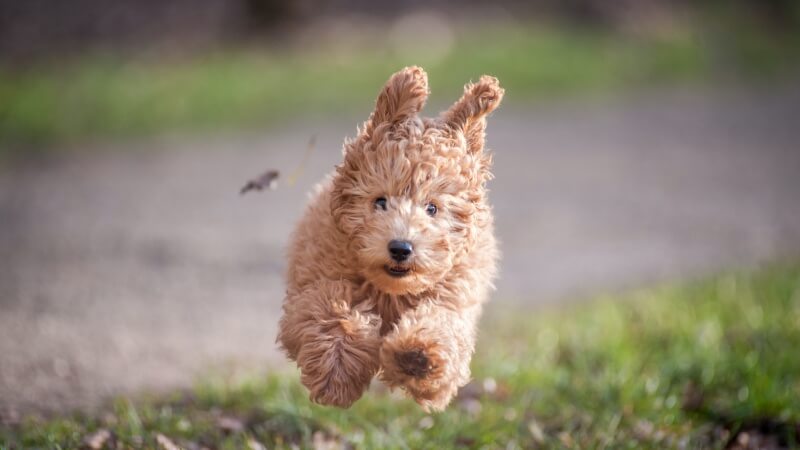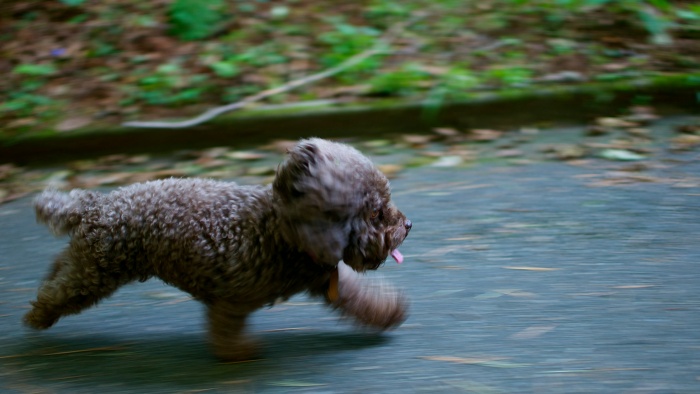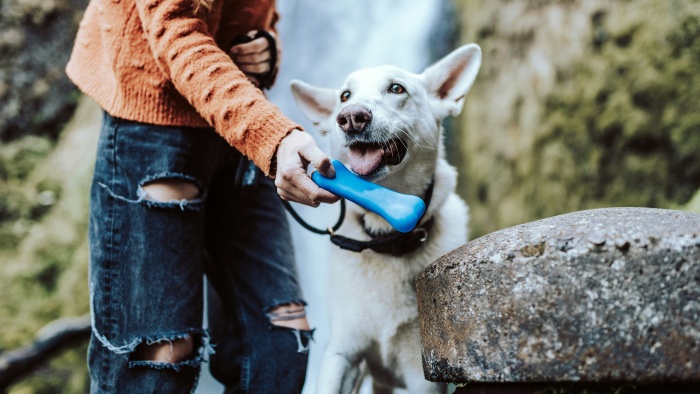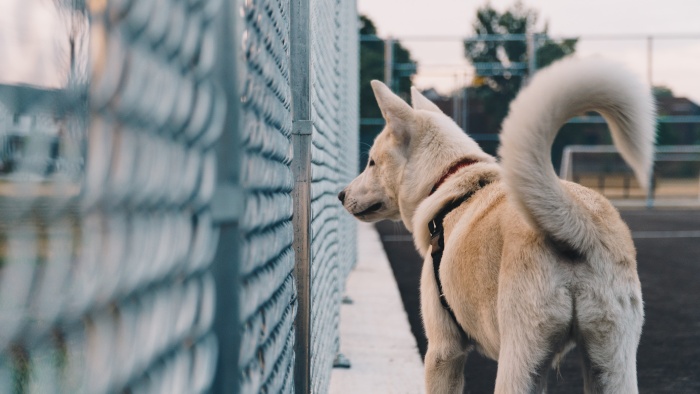When Do Puppies Calm Down:Reveal The Secrets

When do puppies calm down is a common question for new puppy owners, often overwhelmed by a mix of emotions in their puppy’s early months.
Experiencing the joy and love of watching them play is immense, but your patience may be tested when they chew on something off-limits.
In the midst of this whirlwind, it’s natural to wonder about their calming down. While this journey can be tough, the rewards are truly worth it.
To better understand your puppy’s boundless energy and gain tips for keeping them serene during their younger months, continue reading.
Is it common for puppies to be so energetic?
Absolutely! Puppies, akin to human babies, are naturally inquisitive beings eager to explore their environment and understand their limits.
Their daily adventures involve spirited dashes around the room and using their mouths to investigate everything within reach – and yes, that often includes your shoes!
However, various factors influence a puppy’s vigor, including their breed, gender, and the social dynamics they’re part of.

How long do puppies maintain their high energy levels?
Typically, puppies begin to mellow out between 6 to 12 months, but this can vary based on several factors.
It’s often thought that female dogs are more tranquil as they mature faster than males, but breed plays a more significant role in energy levels.
Active breeds like Border Collies or Springer Spaniels might not start calming down until they’re around two years old. Even at that age, their exercise requirements must be met to manage their robust energy.
When do puppies experience peak hyperactivity?
The energy levels of puppies generally follow a developmental timeline from infancy to adulthood. However, you’ll likely notice two peaks of hyperactivity during their growth.
The first peak occurs around 10 to 16 weeks, often dubbed the ‘teenage phase’. This is when they might start showing a rebellious side.
Don’t be surprised if they momentarily ignore your commands, distracted by everything else. Persistence in basic training and using positive reinforcement to curb inappropriate chewing is crucial during this phase.
The second surge in energy usually happens between 6 to 12 months. This period often involves continued testing of boundaries and mischievous behavior, like digging, especially if they’re bored.
Maintaining training, socialization, and playtime during this stage is essential for channeling that playful energy and keeping your puppy both physically and mentally stimulated.
When will puppies begin to settle down?
Puppies typically start showing signs of calming down as they near adulthood, around 12 months of age. However, for larger breeds, this may occur later, between 18 months to 2 years.
By this stage, they’ve usually learned household rules, marking your successful navigation through the challenges of puppyhood!
Managing your puppy’s energy
There are effective strategies to handle your puppy’s boundless energy while keeping your sanity intact!
- Establishing Routine:
Creating a structured routine is vital. Consistent timings for meals, walks, bathroom breaks, and playtime help your puppy understand their daily schedule. This reduces stress and confines hyperactive periods to specific times, like playtime. - Crate Training:
Consider crate training to provide a safe, calming space for your puppy. This not only signifies ‘relaxation time’ but is essential for their health and proper bone development. A personal space can also foster independence, easing anxiety when they’re alone.
💡 Top Tip: Lack of structure can lead to a stressed, hyperactive, and unhappy puppy. A well-defined routine promotes better sleep and minimizes night-time barking.
- Fulfilling Exercise Needs:
Ensure your puppy gets adequate exercise for their age. Engage them in positive activities like fetch, hide and seek, obedience training, or interactive toys such as Kongs or snuffle mats. These activities offer mental stimulation, reducing boredom and mischievous behaviors. - Walks & Socialization:
Walks and socialization are crucial for both physical and mental stimulation. Once fully vaccinated, regular walks are great. In the meantime, consider garden playdates with a vaccinated friend’s dog. This provides social interaction and allows you to socialize with friends while the puppies play.

Some effective strategies for soothing your energetic puppy:
Incorporate a routine, as consistency can curb boredom-related mischief and might even save your furniture from a chewing spree!
Use positive activities to engage their energy pre-vaccination. Playing with chew or squeaky toys, and hiding treats for them to find are excellent starting points to stimulate their minds.
After their final vaccine, consider joining a puppy training class. With your involvement and a professional dog trainer’s guidance, they will learn basic obedience and socialize with other young dogs. This is crucial for their mental development.
Remain patient. It’s easy to feel overwhelmed, but staying calm influences your puppy’s behavior. Showing stress or frustration can inadvertently increase their hyperactivity. So take a deep breath, and embrace puppyhood with patience and positivity.
💡 Bonus Tip: Introduce a dog harness during walks and outings. A harness provides better control and is gentler on a puppy’s developing body, making walks more enjoyable and safer for both of you.
Appropriate dietary recommendations
Ensuring a healthy diet during the puppy phase is crucial for maintaining balanced energy levels. Puppies require nutrient-rich food formulated specifically for their growth and development stage. High-quality puppy food should contain:
- Adequate protein for muscle growth.
- Essential fats, particularly omega-3 fatty acids, for brain development and energy.
- Calcium and phosphorus for strong bone formation.
- Vitamins and minerals for overall health.
Portion control is key; overfeeding can lead to excessive energy and weight gain. Regular meal times aid in digestion and energy regulation. Also, keep treats to a minimum and use them primarily for training purposes to avoid overfeeding.
Understanding your puppy’s emotional signals
Educating new dog owners on recognizing a puppy’s emotional cues is vital for understanding their needs. Puppies communicate through body language and behavior, which can indicate their emotional state:
- Tail wagging and relaxed body posture often indicate happiness.
- Flattened ears, tucked tail, or avoidance behaviors can signal fear or anxiety.
- Excessive barking or destructive behavior may suggest boredom or pent-up energy.
- Growling or snapping could be signs of discomfort or aggression, often due to fear or pain.
Understanding these signals helps you respond appropriately, ensuring your puppy feels safe and understood. It’s important to create a trusting environment where your puppy can express their emotions freely.

Final word
And finally, perhaps the most crucial aspect to embrace is enjoy every moment and channel your inner puppy!
As you ponder, “When do puppies calm down?”, immerse yourself in the journey with your furry companion. Embark on new adventures, discover unfamiliar places, and maybe even forge new friendships at the dog park. Revel in the delightful quirks and playful antics they bring into your life, guiding them as they learn and mature.
By incorporating all these practices, from establishing routines to understanding their emotional cues, you’re not just managing their youthful energy; you’re shaping a future where your spirited puppy transforms into a calm, affectionate adult dog. Cherish this precious time, for it paves the way to a lifelong bond with your calm and loving four-legged friend.

